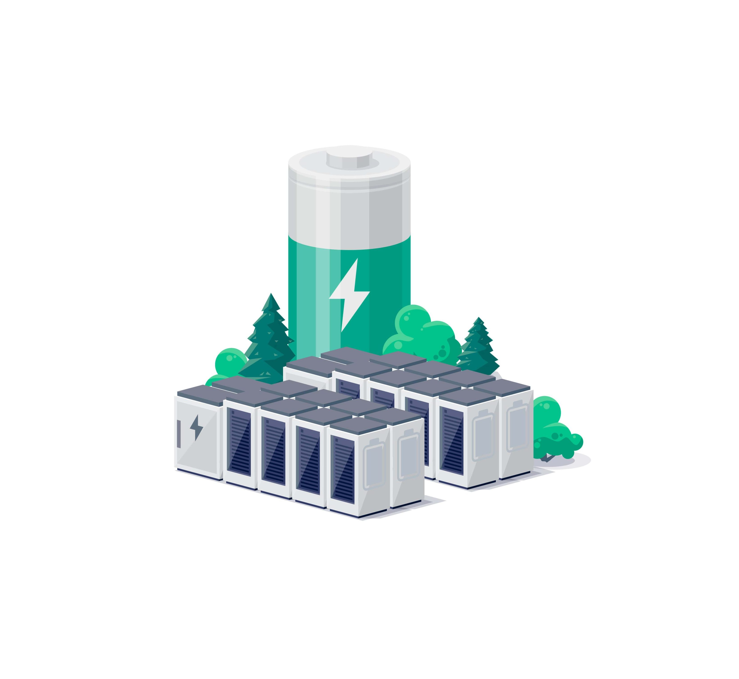Land Use and Battery Storage: The New Links in the Power Grid
As electricity production becomes more decentralized, spatial constraints are becoming clearer.
A Transformation of the Energy System
As Switzerland advances toward its climate neutrality goals, the energy transition is triggering a profound shift in how electricity is produced, transported, and consumed.
The previous model relied on:
🏭 A few large-scale power plants — nuclear or hydroelectric
📈 A predictable and continuous electricity flow
🧭 A hierarchical and centralized grid structure
This model is now being challenged by the rise of renewable energy sources — particularly photovoltaics — which feed electricity into the grid in bursts, driven by sunlight, and often out of sync with consumption patterns.
An increasingly delicate grid balance
This mismatch between production and consumption makes grid balancing significantly more complex. Maintaining a stable frequency of 50 Hz — essential to a secure electricity supply — has become a high-precision exercise. Renewable resources, however virtuous, do not offer the consistency of a thermal or hydroelectric power plant:
❗ Peaks and troughs in production make balancing the grid more challenging
🌬️ Renewables offer neither consistency nor inertia
🔄 Every imbalance impacts the entire grid in real time
And since electricity cannot be naturally stored, any surplus or deficit is instantly reflected across the entire system.
Batteries to Cushion a More Unstable Grid
This is where battery storage systems — or BESS (Battery Energy Storage Systems) — come into their own.
✔️ Absorbing excess production
✔️ Discharge during peak demand
✔️ Responsiveness at the scale of seconds
✔️ Contribution to frequency regulation
In this context, BESS become key infrastructures: they ensure system stability and enable greater integration of renewable energy.
But this technical solution faces a well-known reality in Switzerland: access to land. Installing batteries on an industrial scale requires space—accessible, connectable, secure... and available.
However, pressure on land is intense:
🏙️ Urban density
🌾 Protected agricultural land
🏞️ Restricted landscapes
Unused land can quickly become highly valuable.
Energy production has become decentralized. Energy Storage must keep pace.
To absorb local fluctuations and support a more fragmented network, we need to be able to store energy as close as possible to the points of injection. This requires one thing: space.
🎯 Land, still rarely considered as an energy parameter, is now emerging as a technical lever.
No longer just a planning constraint, but a concrete condition for the energy transition.
Conclusion
Simple forgotten surfaces become strategic infrastructure supports.
However, another way of looking at the territory is possible. There is underused land everywhere:
🧩 Wasteland
🚗 Underused car parks
🏭 Industrial backlands
📦 Even 20 m² behind a warehouse...
These areas are changing status: from neglected areas, they are becoming co-actors in the transition and the support for strategic infrastructures.
💰 As energy production becomes more decentralised, the need for localised storage increases. And with it, the strategic value of these plots of land, however modest.


